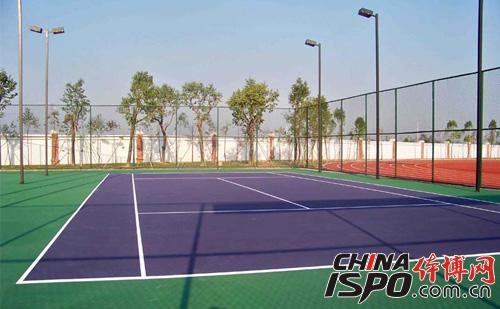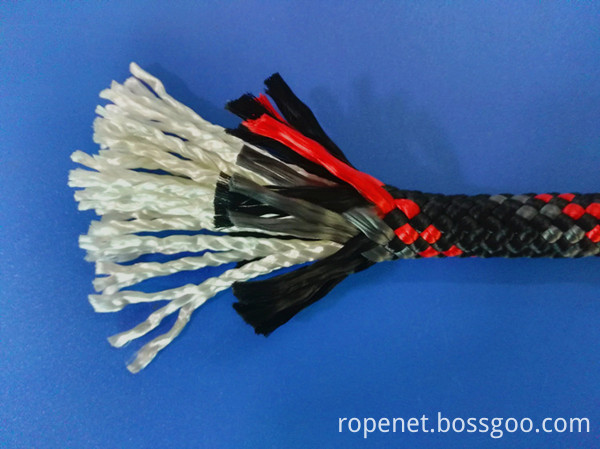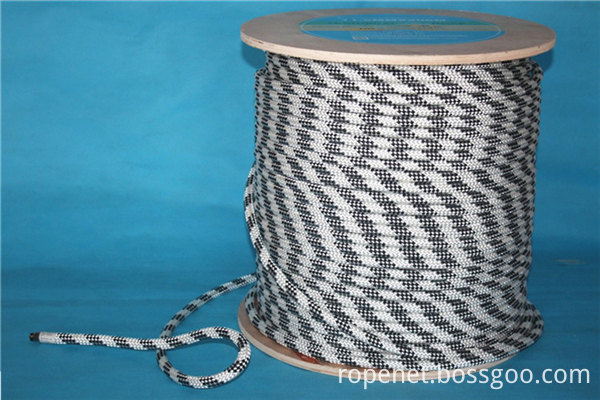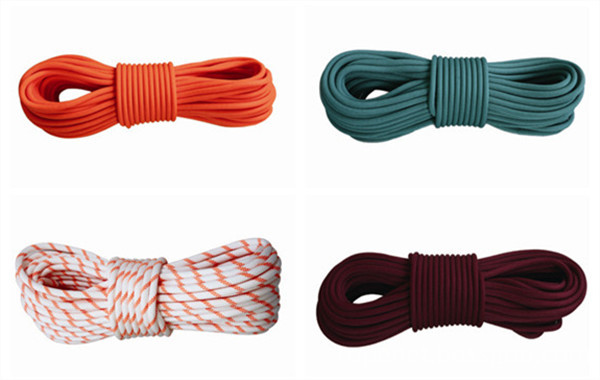Acrylic pitch coating material is approved by the International Tennis Association (ITF) and is suitable for international competition venues. The acrylic coating system is suitable for the base layer of the fortified concrete and the asphalt base layer, and provides high-quality ground material for the sports field at an appropriate price. It is considered as the most economical leisure and professional tennis court and basketball court ground system. 1. Adhesive layer: A layer of “PLAY-PAVE†proprietary adhesive is applied on the concrete base. The adhesive is a water-based epoxy resin that is alkali-resistant and adheres tightly to the surface of the concrete floor. It is tightly integrated with the "PLAY-PAVE" coating to prevent problems such as degumming and wrinkling. 2, the basic reinforcement: an asbestos-free. The acrylic emulsion coating used in combination with quartz sand has the characteristics of good permeability and high strength. It can enhance the strength, flatness and service life of the site. 3, Filling layer: Use "PLAY-PAVE" acrylic layer foundation plus quartz sand paving, you can adjust the particle size and amount of quartz sand to regulate the ball speed. 4, surface layer: by the colorful, anti-UV acrylic coating paved to increase wear resistance. 5, paint line: "PLAY-PAVE" white line paint, hiding power and easy to use. Acrylic Field Category: One, elastic acrylic surface layer: The elastic acrylic sphere scene thickness is 3-5mm, which can be applied to asphalt base or high quality concrete base layer. 1, composed of 100% acrylic material and special polymer rubber particles, with excellent toughness, and can cover the small cracks generated by the foundation; 2, has excellent shock absorption performance, reduce the impact of the player's feet and legs (especially for non-professional players and recreation); 3, has a strong anti-UV properties, indoor and outdoor venues can be used; 4, suitable for a variety of climatic conditions, long service life; 5, can provide a variety of elastic levels for selection; 5, convenient maintenance; 6, the color is diverse, pure color, long-lasting does not fade; Second, hard acrylic surface: Hard earth scene layer thickness 1.2-1.8mm, can be applied to the asphalt base layer. 1. The tennis court special paint is made of 100% high-grade acrylic material, non-toxic and non-asbestos, and is an environmental protection surface material; 2, suitable for a variety of climate conditions, resistant to ultraviolet radiation, color lasting not fade; 3, long service life, use life of up to 3-8 years (specific conditions depending on the site of the base quality, construction quality and site use frequency may be); 4, convenient maintenance; 5, the performance price ratio is very competitive. 6, hard acrylic surface layer relative to the elastic surface layer, due to the thickness of the reasons for the relatively high level of site flatness; Acrylic court features: 1. Course special paint, made of 100% high-grade acrylic material, non-toxic, non-asbestos, and environmental protection surface material; 2. Suitable for all kinds of climatic environments, resistant to ultraviolet radiation, long-lasting color, pure color; 3, long life, use life of up to 8-10 years (specific conditions depending on the site of the base quality and construction quality may be); 4, acrylic paint for self-cleaning products, easy maintenance and high pressure water rinse; 5, performance and price ratio is very competitive; 6, hard acrylic surface layer relative to the elastic surface layer, due to the thickness of the reasons for the relatively high level of site flatness. Acrylic acid production method: 1. Acrylonitrile hydrolysis: acrylonitrile is first hydrolyzed by sulfuric acid to form sulphate of acrylamide, and then hydrolyzed to produce acrylic acid, and the by-product is ammonium bisulphate. This law has been greatly developed in the United States Rom-Haas company. The first step hydrolysis temperature is 90 ~ 100 °C. A slight excess of 55% to 85% of sulfuric acid was added to the acrylonitrile. After 1 h, the acrylonitrile was completely converted. Then, water was added for the second hydrolysis, and the reaction temperature was increased to 125-135° C.; the hydrolyzed product was distilled under reduced pressure. Acrylic acid. This method is actually the development of early cyanohydrin method. As the byproduct ammonium sulfate produced after hydrolysis is difficult to handle, the price of the raw material acrylonitrile is relatively expensive, thus affecting the production cost; 2, cyanohydrin method: This method to chlorohydrin and sodium cyanide as raw materials, the reaction of cyanohydrin, cyanohydrin in the presence of sulfuric acid at 175 ° C hydrolysis of acrylic acid: If the hydrolysis reaction in methanol, the methyl acrylate; 3, β - propiolactone method: This method raw materials for ketene, it is also known as ketene method, the reaction is as follows: first acetic acid is split into ketene, and then react with anhydrous formaldehyde to produce β-propiolactone; The catalyst is contacted with hot 100% phosphoric acid at 140-180°C and 2.5-25 MPa, and isomerized to acrylic acid. Production of acrylic acid by β-propiolactone yields high purity and high yields. By-products and unreacted materials can be recycled, and are suitable for continuous production, but it requires acetic acid as a raw material, in particular, due to propiolactone. Considered to be a carcinogenic substance, this law is no longer used in industry; 4. High-pressure Repe method: Acetylene is dissolved in tetrahydrofuran and reacted with carbon monoxide and water in the presence of a catalyst consisting of nickel bromide and copper bromide to obtain acrylic acid. This method is characterized by: using tetrahydrofuran as a solvent, can reduce the risk of high-pressure treatment of acetylene; at the same time, the catalyst does not use the carbonyl nickel used by the original Repe method, only nickel salt. Propylene is mixed with air and water vapor at a certain molar ratio. In the presence of a complex catalyst such as molybdenum-antimony, the reaction temperature is 310-470° C., and acrolein is obtained through normal pressure oxidation with a yield of 90%. Then acrolein is mixed with air and water vapor at a certain molar ratio. In the presence of a complex catalyst such as molybdenum-vanadium, the reaction temperature is 300-470° C., and the acrylic acid is obtained by normal pressure oxidation with a yield of 98%. This method is divided into one step and two steps. The one-step process is the oxidation of propylene in a reactor to acrylic acid; in the two-step process, propylene is first oxidized to produce acrolein in the first reactor, and acrolein is then oxidized into the second reactor to produce acrylic acid. The two-step method is based on the structure of the reactor and is divided into fixed bed and fluidized bed methods. In the industrial production process of acrylic acid, the cyanohydrin method and the high pressure Repe method have basically been eliminated. In the past, acetic acid was used as the raw material to be cracked into ketene, and then reacted with anhydrous formaldehyde to form propiolactone, which was then contacted with hot phosphoric acid. acrylic acid. The enone method or the β-propiolactone method is also basically eliminated. The acrylonitrile method is only used in a few old devices. The industry mainly adopts the improved Leipei method and propylene oxidation method, while the latter is more common and has the most promising development. In the patent report, there is also the production method of propionic acid as a raw material; 5. Propylene Oxidation: Propylene is mixed with air and water vapor at a certain molar ratio. It is oxidized to produce acrolein in the presence of a molybdenum lanthanide-based composite catalyst. Acrolein is then mixed with air and water vapor at a certain molar ratio. In the presence of a vanadium-tungsten-based composite catalyst, oxidized to obtain acrylic acid. According to the structure of the reactor, this method is divided into fixed bed method and fluidized bed method. Except the United States, the Soviet-Russian law adopts a fluidized bed, and all other columns adopt a tubular fixed bed. 1 Fixed bed method. The production method is: the first reactor feed propylene content is 4% ~ 7%, steam 20% ~ 50%, the rest is air, space velocity 1300 ~ 2600h-1, reaction temperature 320 ~ 340 °C, pressure 0.1 ~ 0.3 MPa; the second reactor has an airspeed of 1800-3600 h-1, a reaction temperature of 280-300°C, a pressure of 0.1-0.2 MPa, a conversion of propylene and acrolein of more than 95%, and an acrylic acid selectivity of 85 % to 90%. The process is: mixing propylene, water vapor and preheated air into the first reactor. Propylene is oxidized to acrolein. The second reactor was then reacted to give acrylic acid. The first and second reactors are all tubular reactors. Molten salt is used as the heat carrier. The reaction gas from the second reactor and the feed air exchange heat and enters the quench tower, which is in reverse contact with the water added at the top of the tower. An aqueous solution of acrylic acid in an amount of 20% to 30% was obtained. The aqueous solution enters the extraction column and uses butyl acetate or xylene as the extractant to separate the water from the acrylic acid. The water-rich extract comes out of the top of the extraction column and enters the solvent recovery column. The extractant is distilled from the top of the column and sent back to the extraction column for recycling. The bottom of the tower discharges waste water. The raffinate in the extraction column enters the solvent distillation column. The solvent (extractant) is distilled off from the top of the tower and sent back to the extraction tower for recycling. The bottom of the tower is used to obtain crude acrylic acid, and then the light and heavy components are removed to obtain an acrylic product. During the production of acrylic acid by gas-phase contact oxidation, there are trace amounts of acrolein, acetic acid, pentanal acid, formic acid, and other aldehyde impurities in addition to the product acrylic acid. Aldehydes are by-products of propylene oxidation or generated by the oxidation of impurities contained in propylene feedstocks, such as acetaldehyde, formaldehyde, benzaldehyde, furfural, acrolein, etc., and the reaction gases containing these by-products are cooled, extracted and distilled. , Residues in acrylic products. The conventionally refined acrylic product still contains about 50-500 x 10-6 aldehydes. In order to meet the need of high-purity acrylic acid, Beijing Dongfang Chemical Factory developed a method for preparing high-purity acrylic acid by using its polymerization-grade acrylic acid as its raw material, so that the total aldehyde content is less than 5×10-6, which meets or exceeds relevant foreign reports. The data requirements (less than 10x10-6 abroad). The experimental method is: adding a certain amount of polymerization grade acrylic acid into the flask, adding the reagent DL, and treating it in the range of 10-80°C under normal pressure, and then entering the packed tower to process and distill, the temperature in the tower kettle is 60-80°C The tower top temperature is 50 ~ 70 °C, vacuum 93.33 ~ 99.99KPa, using additional polymerization inhibitor and gas phase polymerization inhibitor method, can prevent the polymerization of acrylic acid in the distillation process. The distillate collected by this method is high purity acrylic acid; 2 fluidized bed method. The method is that propylene, air and water are used to produce acrolein through the first fluidized bed reactor, and then enter the second fluidized bed reactor to generate acrylic acid, which is then sprayed, cooled, extracted and distilled, and the acetic acid is removed in the vacuum tower. Acrylic acid. The ratio of the oxidation mixture is propylene:air:water=1:12:8 (molar ratio). The first ebullating bed reactor temperature was 370° C. and the contact time was 2 s; the second ebullating bed reactor temperature was 260° C. and the contact time was 2.25 s. Propylene conversion rate of 75% to 80%, the total yield of 40%, acrylic acid content of 97%, the average content of 93%. Domestic use of a seven-component catalyst (molybdenum-vanadium-phosphorus-iron-cobalt-nickel-potassium) in the first reactor, oxidation of propylene to acrolein; use of a ternary component (molybdenum) in the second reactor Vanadium-tungsten) catalyst, acrolein oxidation to acrylic acid, when propylene:air:water=1:10:6, contact time 5.5s, linear velocity 0.6m/s reaction temperature: a period of 370-390 °C, two-stage At 270-300°C, propylene conversion is 78.7%-87%, acrolein yield is 51.9%-57.2%, propylene conversion is 79.3%-89.4%, acrylic acid yield is From 48.3% to 49.8%, the space-time yield of acrylic acid is 55 to 60 kg/(m3 catalyst·h). Related Reading: Acrylic sports field maintenance and maintenance Http:// "The most standard acrylic sports venue construction plan" Http://
Static Rope
Static rope is mainly applied with caving, rescue, industry lifting, high place work, and high altitude downhill. It is High strength, abrasion resistant. It can be used as Static rope, Safety Rope, caving rope, industry lifting rope, Rescue Rope, Escape Rope, protective cap rope, Climbing rope, rope climbing, rock climbing rope, climb rope, Climbing Rope for sale, mountain climbing rope.
Description of Static Rope
Static rope is of double-layer structure. Sheath is made of woven nylon 6 fibers, to protect the inner core, decrease the overall abrasion, and to increase the strength. Inner core is three parallel twisted twins composed of a certain number of nylon 66 fibers, to meet the requirements of ultra-low static elongation, and most importantly ensure the utilization rate of the strength.
UL Certification is North America standard. Comply with NFPA1983-2012 standard, mean Standard on life safety rope and equipment for emergency services. Certificated by UL (Underwriter Laboratories Inc)
Structure Performance
Material
Polyamide Fiber(Nylon Fiber)
Structure
Double layer structure with sleeve and core
Color
White with black(or customized)
Static elongation
between 1% and 10 %( 10% broken strength)
Volume Density
1.14g/Cubic cm
Melting Point
215 degree centigrade
Ware-resistance
Well
UV & Heat Resistance
Good
Wet and Dry Strength
Wet strength 5% slightly lower than dry strength
Linear Density Tolerance
±5%
Diameter Tolerance
±2%
If you have any questions, pls send email to us directly.
Static Rope Static Rope,Static Nylon Rope,Static Climbing Rope,Outdoor Sport Static Rope ROPENET GROUP CO.,LTD , https://www.cnparacord.com



